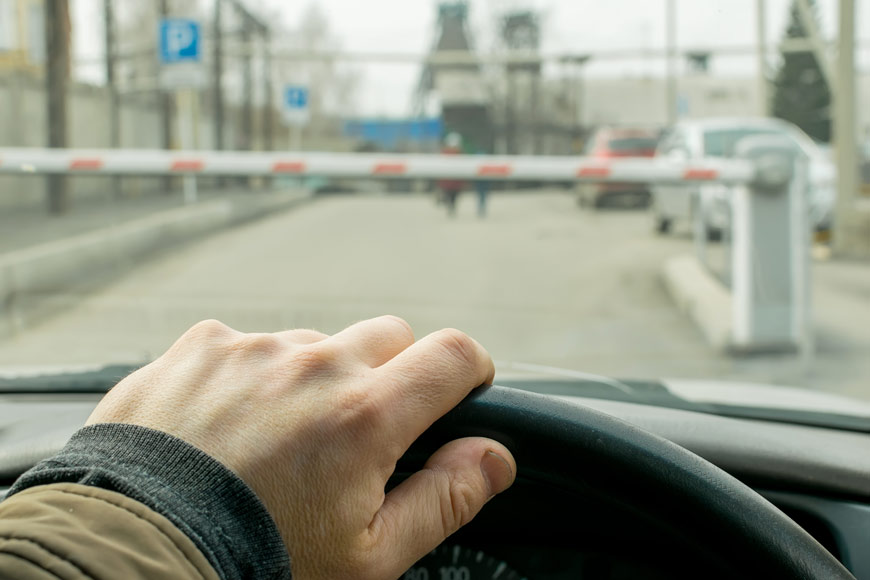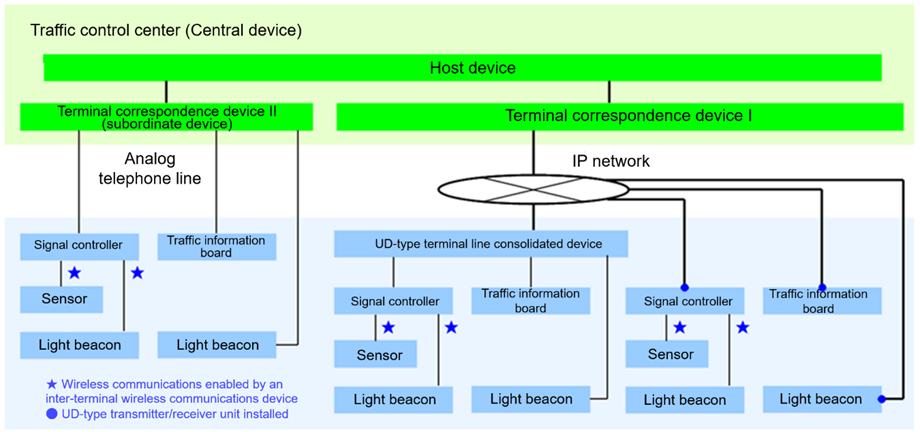Not known Factual Statements About Safety Network
Wiki Article
3 Easy Facts About Safety Network Explained
Table of ContentsThe Ultimate Guide To Safety NetworkExcitement About Safety NetworkSome Known Factual Statements About Safety Network The 3-Minute Rule for Safety NetworkSome Ideas on Safety Network You Need To Know
The phases within a ring are phoned number as shown in Number 7-2. Dual-Ring Controller System Consists of 2 interlocked rings set up to time in a recommended sequence and also permit concurrent timing of respective phases in both rings, based on the restriction of the obstacles (compatibility lines). Traffic management services. Each ring might consist of approximately 2 phases in each of its two barrier teams, for a total of 8 stages.Barrier (compatibility line) A referral factor in the marked series of dual-ring and multi-ring controller units at which rings are interlocked. Obstacles make certain contradictory phases will not be chosen or time simultaneously. At an obstacle, rings terminate the present stage and go across the barrier concurrently, as highlighted in Number 7-3.
If a telephone call does not exist in among the rings when the obstacle is crossed (from the other stage team), a stage is picked because ring to be turned on by the controller in a fixed fashion. As an example, referring once more to number 7-3 in the lack of contact Phases 7 as well as 8, Stage 2 and also Stage 6 end to service a get in touch with Stage 3. https://www.easel.ly/infographic/4jw2ek.
The Basic Principles Of Safety Network

Setting Summary Minimum Environment-friendly The absolute minimum duration of the phase's green sign. The phase can not gap out or be compelled off throughout this interval. Variable Initial Green A time determined from the variety of technique detector actuations during red. In the lack of a stopline detector, it permits sufficient time to solution cars queued in between the stopline as well as a breakthrough detector.
The period of this interval is influenced by relevant specifications consisting of Added Preliminary (amount of green included per actuation) as well as Maximum Preliminary. The phase can not void out or be required off throughout this period.
The Definitive Guide for Safety Network
Green Extension The quantity of time through which the eco-friendly is expanded after a car is identified. If the minimum green, variable initial eco-friendly, Walk, and FDW have all expired, and no technique detector input is presently On, the stage environment-friendly can end (space out) if the time space between consecutive automobiles surpasses the eco-friendly expansion time plus the moment the detector input remains On while the automobile is being picked up.This criterion bypasses Environment-friendly Expansion, yet none of the other parameters over. Yellow Clearance The taken care of duration of the yellow indication that always complies with the green sign. Red Clearance The moment during which both the terminating stage, check this site out as well as the complying with contradictory phase(s) about to start, simultaneously existing a red sign - Traffic control companies.
The "volume" option increments a first environment-friendly period timer each time a car is found while the phase is red. The minimum green is timed as the higher of the regular minimum eco-friendly and also this computed first environment-friendly, approximately an optimum. In the absence of stopline detectors, it can be utilized to count the variety of vehicles waiting before the development detectors as well as increase the minimal environment-friendly, if needed, to remove this queue.
Indicators on Safety Network You Should Know
One such sequence can be used on one street (one obstacle group), while a different sequence is made use of on the other street. Series Description Leading Left Turn Series begins with Stage 1 as well as Phase 5, the opposing turns moving with each other. As demand ends or maximum environment-friendly is reached on either Phase 1 or Stage 5, the particular left-turn is terminated after the correct change as well as clearance periods, and also the opposing thru movement (Phase 2 or Stage 6) is offered a green indicator simultaneous with its going along with left-turn.As need ends or maximum environment-friendly is reached on Stage 5, that left-turn is ended after the correct change and clearance intervals - https://soundcloud.com/gloria-johnson-560383511. The opposing thru activity, Phase 6, is launched to keep up Phase 2. As demand ends or optimum environment-friendly for Stage 2 is reached, it is ended after the proper adjustment as well as clearance intervals, at the obstacle line.

Safety Network for Dummies
Input Summary Lorry Detector Call Enters a car demand for service right into the ideal stage of the controller unit. Pedestrian Detector Call Goes into a pedestrian demand for solution right into the associated phase of the controller unit. Hold Command that keeps the existing right-of-way as well as has various feedbacks, as follows relying on operation in the car non-actuated or actuated mode: For a non-actuated stage, energization of the hold input preserves the controller system in the timed out walk period with green and walk indicators shown.De-energization of the hold input and also with the WALK interval timed out causes the controller system to progress right into the pedestrian clearance interval. Re-application of the hold input while timing the pedestrian clearance section of the green interval neither hinders the timing of this duration neither the discontinuation of the phase.
Report this wiki page